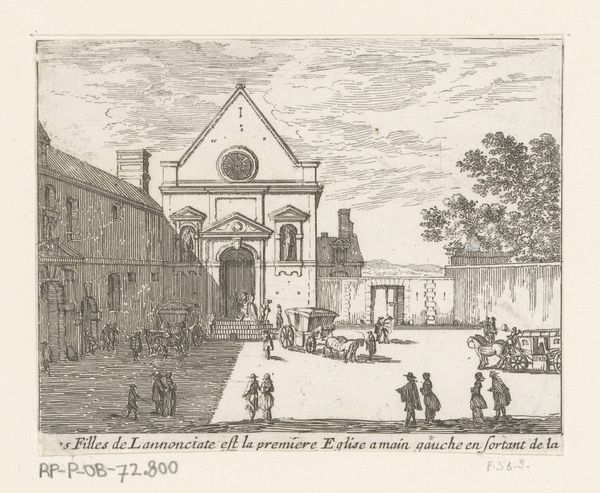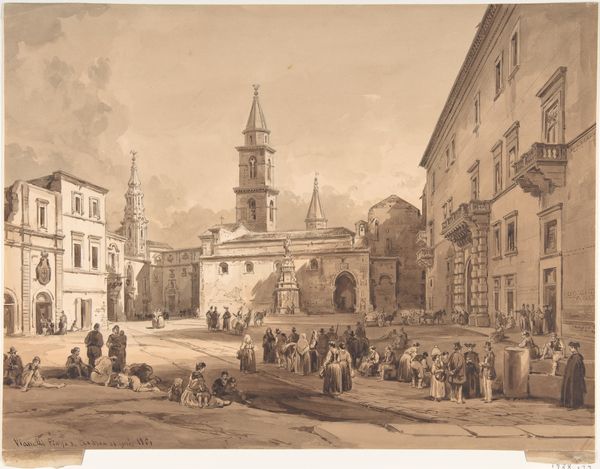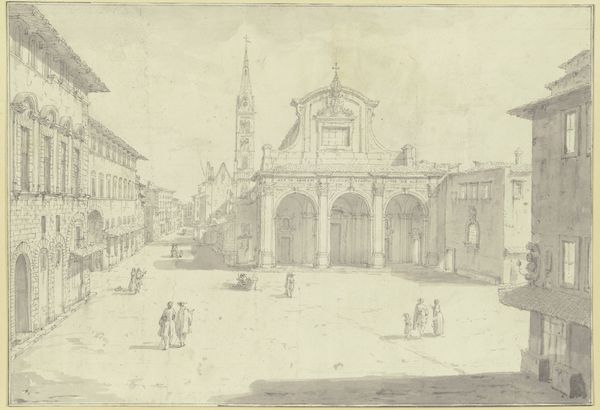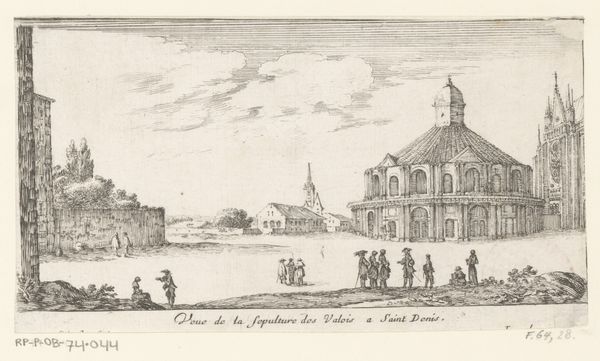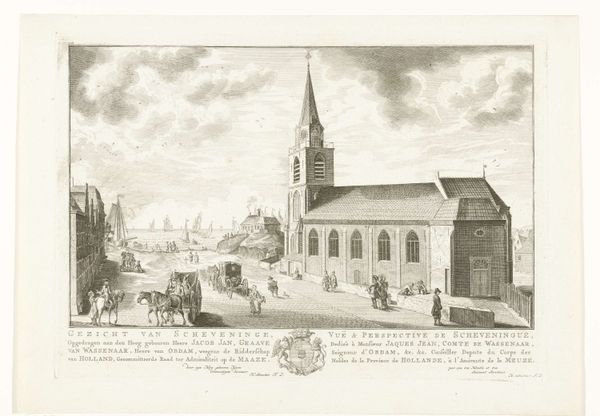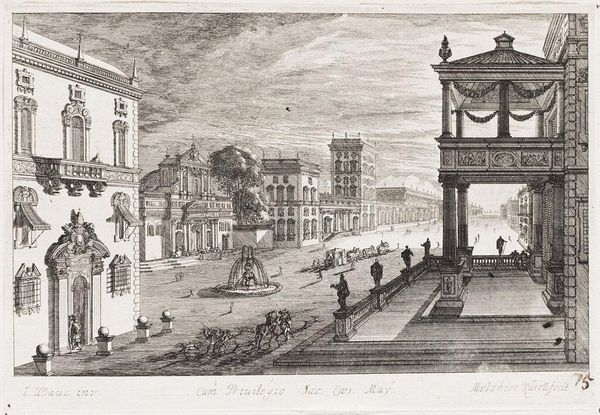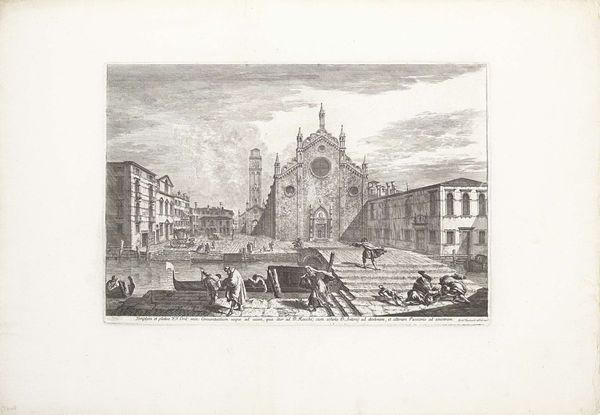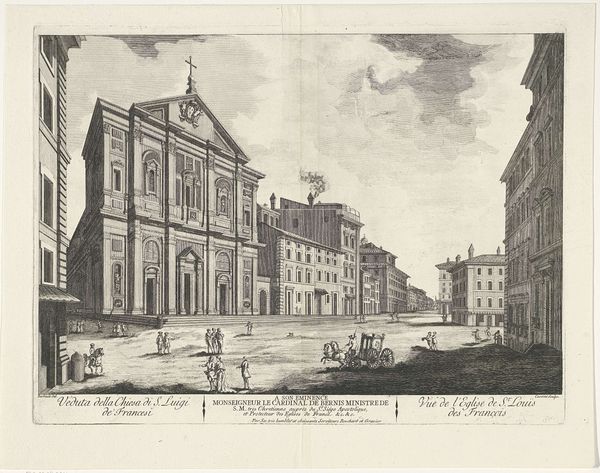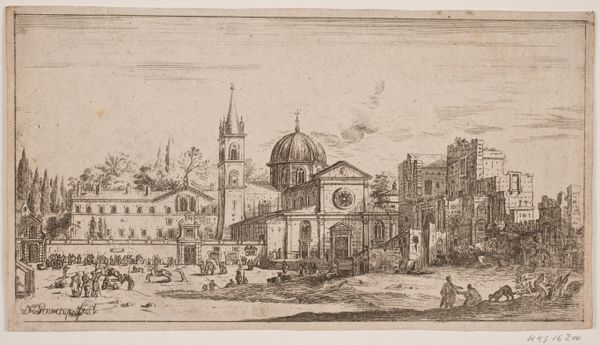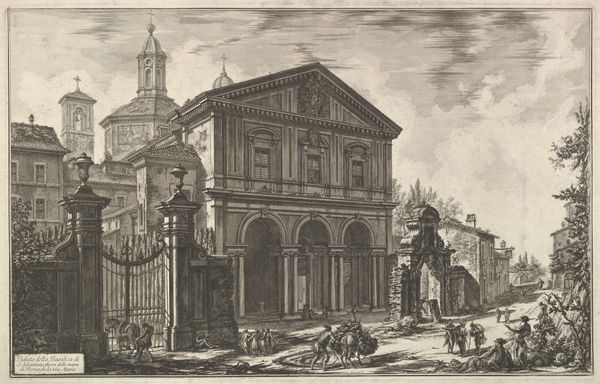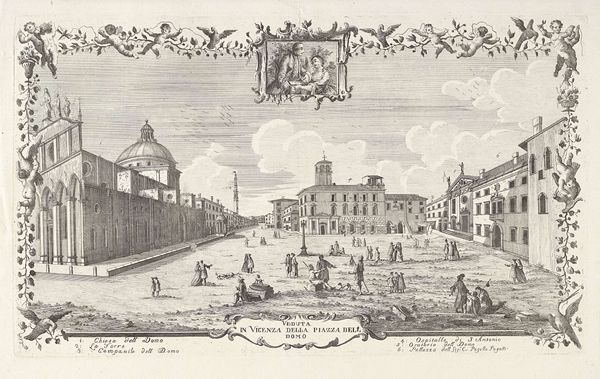
print, engraving, architecture
#
baroque
# print
#
perspective
#
cityscape
#
italian-renaissance
#
engraving
#
architecture
Dimensions: height 485 mm, width 667 mm
Copyright: Rijks Museum: Open Domain
Curator: This is Pietro Monaco's "Piazza San Pier Maggiore," a cityscape rendered between 1717 and 1763, now residing at the Rijksmuseum. It's an engraving that exemplifies Baroque ideals, focusing heavily on perspective and architectural detail. What are your first thoughts? Editor: There’s a stark formality to it, despite the bustling figures. The rigid perspective almost flattens the social activity. It feels…calculated, in a way that suppresses the chaos inherent to city life. Curator: I find that fascinating. Engraving as a medium lends itself to that crispness. Consider the laborious process, the careful cutting into the metal plate, and the layers of meaning added through the act of reproduction and circulation of these images. These weren't singular "art" objects but printed impressions intended for a wider audience. Editor: Absolutely. Think about the target audience for such prints. Likely affluent individuals who appreciated these depictions of Italian urban centers. These prints reinforced specific ideals and views, normalizing certain power dynamics by showcasing this architectural dominance over daily lives. Look at the people in relation to the buildings; they're dwarfed. Curator: The depiction of architecture isn't just representational; it actively participates in the shaping and perception of space. Consider how the architecture shown highlights specific craftmanship traditions and the materials that shape this cityscape— the social and material forces involved in bringing this Piazza to life. Editor: And not only shapes space but also constructs a narrative. This isn’t simply a neutral observation. The placement and rendering of buildings, the selection of this specific viewpoint – all communicate something about the artist's, or the patron's, view of urban authority and the public's interaction with it. This Piazza is controlled, monitored. Curator: Indeed. This control extends to the labor involved in producing the engraving itself – Monaco, the etchers, the printers— a complex network of individuals contributing to the material existence and societal influence of this cityscape. Editor: Which, in turn, perpetuates existing cultural norms by circulating this particular view. This image serves as a form of propaganda, reinforcing ideals and aesthetic preferences through its deliberate construction of reality. I'm just so intrigued by that element. Curator: Yes, it’s much more than just a pretty picture. Examining it closely lets us look into not only what’s represented but *how* it was brought to life and for *what* social purposes. Editor: Precisely! A visual artifact, charged with political intention, now accessible for contemporary reinterpretation.
Comments
No comments
Be the first to comment and join the conversation on the ultimate creative platform.
